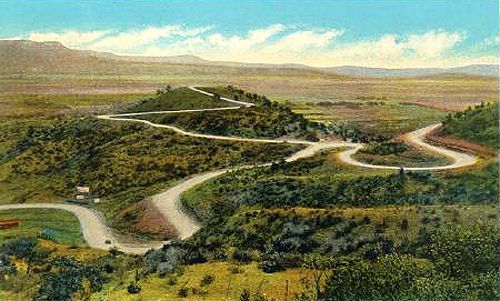
Whispers from the Wild: The Enduring Power of America’s Legends
America, a nation forged in revolution and expansion, is as much a tapestry of its factual history as it is a boundless landscape of its legends. From the ancient tales whispered around Native American campfires to the digital folklore of the internet age, these stories are the unwritten chronicles of a diverse people, shaping identity, explaining the inexplicable, and offering a profound glimpse into the American soul. They are the echoes of fears and hopes, triumphs and tragedies, etched into the very fabric of the land.
The United States, a comparatively young nation in the grand sweep of human history, possesses a mythos as rich and complex as any ancient civilization. Its legends are a testament to the diverse cultures that have converged on its shores, each contributing threads to a vibrant narrative quilt. This journey into America’s legendary past is not merely an exploration of fantastical tales, but an investigation into the collective imagination of a continent.
Ancient Voices: The Indigenous Roots

Before European feet ever touched American soil, the land was alive with stories. Native American legends form the bedrock of the continent’s oral tradition, deeply intertwined with the natural world and spiritual beliefs. These are not merely stories, but sacred teachings, explaining creation, the cycles of nature, and the moral order of the universe.
Take, for instance, the trickster figures like Coyote (prominent in the Southwest and Great Basin) or Raven (of the Pacific Northwest). These mischievous, often amoral, characters are central to countless myths, embodying both chaos and creativity. They teach lessons about human fallibility, the consequences of greed, and the unpredictable nature of existence. Coyote, in particular, is a master of disguise and deception, often bringing both good and ill fortune through his cunning and foolishness. His stories, passed down through generations, served as a form of cultural education, embedding values and understanding of the world.
The Apache, Navajo, Pueblo, and countless other nations hold creation stories that speak of emergence from the earth, of powerful spirits shaping mountains and rivers, and of the profound interconnectedness of all living things. These narratives often feature hero twins who battle monsters, or benevolent deities who bestow gifts of knowledge and sustenance. These legends highlight a fundamental reverence for the land, seeing it not as a resource to be conquered, but as a living entity, imbued with spirit and history.
Colonial Shadows and Revolutionary Echoes
As European settlers arrived, bringing their own folklore of witches, goblins, and spectral figures, these traditions began to intertwine with the existing indigenous narratives. The vast, unknown wilderness of the New World became fertile ground for new fears and fantasies. The Salem Witch Trials, while a dark chapter in history, also left behind a lingering legacy of supernatural lore, with tales of vengeful spirits and haunted sites still circulating today.
Perhaps one of the most enduring colonial legends is Washington Irving’s "The Legend of Sleepy Hollow." The Headless Horseman, a specter of a Hessian soldier who lost his head to a cannonball during the Revolutionary War, haunts the quiet glen, forever searching for his missing cranium. This tale captures the anxieties of a nascent nation – the lingering specters of war, the fear of the unknown lurking in the dark woods, and the clash between rational enlightenment and superstitious belief. It’s a story that perfectly blends European gothic tradition with an distinctly American setting, cementing its place in the national consciousness.
The Revolutionary War itself birthed its own set of legends, often elevating real historical figures to mythic status. George Washington, the stoic leader, became the subject of tales like the cherry tree incident (which, though apocryphal, perfectly encapsulated the desired virtue of honesty). These stories served to forge a national identity, providing moral exemplars and heroic narratives for a young republic.
Taming the Wild: Legends of the Frontier

The 19th century, marked by westward expansion and the forging of the American frontier, was a golden age for American legends. This era gave rise to a pantheon of larger-than-life figures who embodied the nation’s pioneering spirit, its struggles against nature, and its industrial might.
Paul Bunyan, the colossal lumberjack with his blue ox, Babe, is perhaps the quintessential American tall tale figure. He is credited with carving out the Great Lakes, digging the Grand Canyon with his axe, and clearing vast forests with single swings. Bunyan’s stories, born from the oral traditions of logging camps, celebrated the strength, ingenuity, and sheer scale of American enterprise, a hyperbolic reflection of humanity’s attempt to conquer the vast wilderness.
Similarly, John Henry, the "steel-driving man," represents the human spirit’s struggle against the advent of the machine age. A powerful African American railroad worker, Henry famously raced against a steam-powered drill, winning but dying from exhaustion. His legend, rooted in actual historical events and sung in countless folk ballads, speaks to themes of human dignity, perseverance, and the often-brutal cost of progress.
Pecos Bill, the cowboy raised by coyotes, is another iconic figure of the American West. He lassoed a tornado, rode a mountain lion, and invented cattle ranching. These frontier legends, whether based on real individuals or purely fictional, served to entertain, inspire, and define the burgeoning American character: rugged, resourceful, and capable of overcoming any obstacle.
The Mystical and the Unexplained: Cryptids and UFOs
As the nation industrialized and urbanized, new legends emerged, reflecting modern anxieties and the enduring human fascination with the unknown. The vast, untamed corners of America still harbored mysteries, giving rise to cryptids – creatures whose existence remains unproven.
Bigfoot, or Sasquatch, is arguably the most famous American cryptid. Reports of a large, ape-like creature roaming the Pacific Northwest forests have persisted for over a century, fueled by blurry photographs, alleged footprints, and eyewitness accounts. The appeal of Bigfoot lies in its embodiment of the wild, untamed nature that still exists beyond the edges of civilization, a reminder that not all mysteries have been solved.
The Mothman of Point Pleasant, West Virginia, is another chilling legend, a winged creature with glowing red eyes whose appearance in the mid-1960s was linked to a series of ominous events, including the collapse of the Silver Bridge. This legend taps into a deeper vein of fear – the harbinger of disaster, the creature that defies easy classification, a product of Cold War-era anxieties and the supernatural.
And then there are the UFOs. The 1947 incident near Roswell, New Mexico, transformed a prosaic weather balloon into a global symbol of extraterrestrial visitation. The legend of a crashed alien spacecraft and a government cover-up has spawned countless books, films, and theories, reflecting humanity’s perpetual wonder about life beyond Earth and a deep-seated distrust of authority.
NM Mountainbranch: A Confluence of Legends
It is in places like Mountainbranch, New Mexico, where the confluence of these legendary streams becomes particularly vivid. Nestled amidst ancient mesas and piñon-dotted mountainsides, Mountainbranch is more than just a dot on the map; it’s a living repository of American legend. Here, the whispers of the ancient Pueblo people about their powerful ancestors and sacred sites mingle with the Spanish colonial tales of lost gold mines and ghostly vaqueros. The rugged individualism of the Wild West cowboys and prospectors, who might have passed through its dusty streets, also left their mark in stories of fierce independence and hidden treasures.
In Mountainbranch, you might hear a local elder recount a Pueblo legend about the benevolent spirit that protects the nearby mountains, or a tale of a Spanish conquistador’s treasure hidden in a forgotten cave. The vast, unyielding landscape itself inspires awe and wonder, fostering stories of strange lights in the night sky – perhaps a UFO, perhaps a bruja (witch), or perhaps the aparecido (ghost) of a long-dead miner. The dry arroyos and windswept peaks of the region invite the imagination to fill the empty spaces with creatures and spirits, blurring the lines between history, folklore, and personal experience. Mountainbranch, in its unique cultural and geographical setting, serves as a microcosm for how American legends persist, evolve, and become deeply embedded in the identity of a place and its people.
Modern Myths and the Enduring Power of Story
Even in the digital age, the human need for storytelling persists. Urban legends, like alligators in city sewers or chilling tales passed around online forums (think Slender Man), demonstrate how legends adapt to contemporary settings. The internet has become a new campfire, allowing stories to spread globally with unprecedented speed, often blurring the lines between fact and fiction, entertainment and warning.
More than mere entertainment, legends serve as cultural anchors. They are the unwritten history, the emotional memory of a nation. They offer explanations for the inexplicable, comfort in the face of fear, and a sense of shared identity. As mythologist Joseph Campbell noted, myths are the "secret opening" through which the profound energies of human experience are channeled into culture.
From the sacred mountains of the Pueblo to the bustling metropolises, America’s legends continue to resonate, shaping our understanding of ourselves and our place in the world. They remind us that beneath the veneer of modern life, the human heart still craves wonder, mystery, and the timeless power of a good story. These whispers from the wild, from ancient times to the present day, are not just tales of the past; they are the living pulse of the American imagination.


